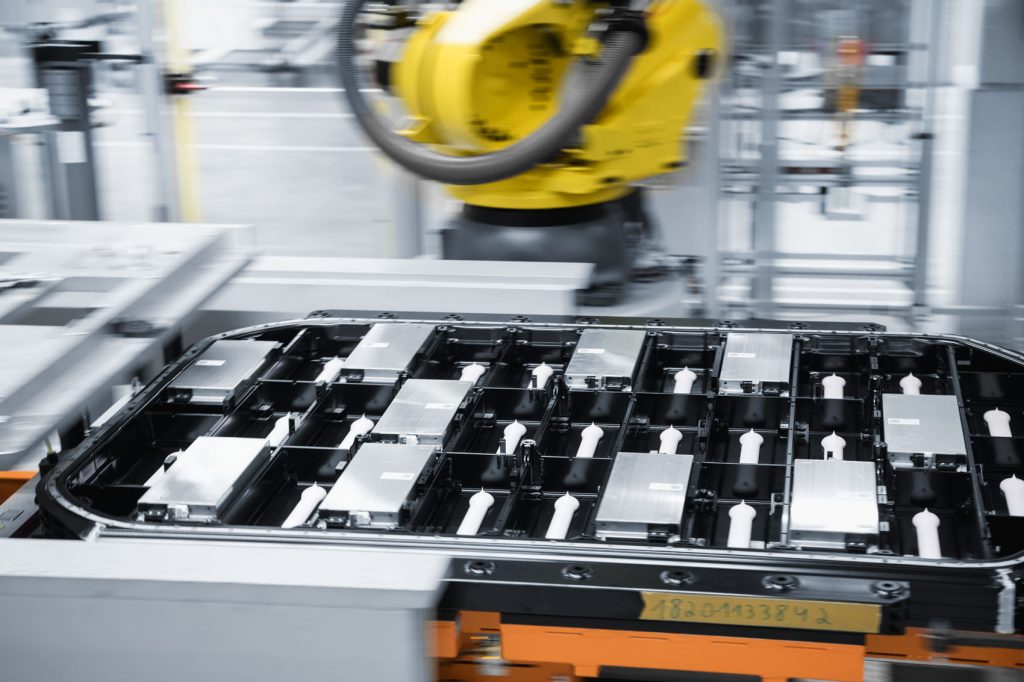Thermally conductive adhesives and gap fillers: A key technology for electromobility

When accelerating, braking, and charging electric vehicles, the battery, drive train, and power electronics of an electric vehicle heat up significantly. This heat must be dissipated quickly to protect these components from overheating. A highly thermally conductive, durable connection between the components and the cooling systems ensures high drive power, fast charging, and a long service life for the vehicles. This is possible with application-specific optimized TIM (thermal interface materials).
In the field of electromobility, a distinction is made between gap fillers and TCA (thermally conductive adhesives) in TIM. Both material classes are based on polymers to which a high proportion of fillers, mostly inorganic, are added for heat conduction. Gap fillers are usually soft materials and can only transfer very low mechanical loads. This offers advantages when repairing and disassembling batteries. In contrast, TCAs are significantly stronger after their polymer component has hardened, and they adhere strongly to surfaces. TCAs are therefore used as thermally conductive adhesives to bond components of the battery, power electronics, or drive train in a way that permanently transfers force mechanically while also enabling high heat dissipation. In addition, there are thermally conductive potting compounds for protecting electronic components from environmental influences by encapsulating them and from overheating.
In the field of vehicle batteries, TIMs create a heat conduction path between the battery module and the cooling system and ensure that the waste heat from the batteries is quickly dissipated into the environment. Paste-like materials for heat conduction have long been used in very small quantities in microelectronics, for example as silver-containing thermal paste to thermally couple electronic components and heat sinks. However, much larger quantities of TIM are required to cool the components in electric cars. They must meet specific requirements, are processed differently, and must be significantly cheaper. The automotive industry's requirements for TCA and gap fillers therefore generate a high demand for materials research, adhesive technology development, and manufacturing methods.
Optimization of existing gap filler and TCA concepts
Fraunhofer IFAM has provided research support for the OWES (Optimized Heat Dissipation from Energy Storage Devices for Series Electric Vehicles) research project led by Audi AG. In OWES, various materials science and manufacturing solutions for heat dissipation were developed. The follow-up project nekztOWES, which is currently underway, includes the ecological and economic efficiency of the technologies. Both research projects were made possible by funding from the Federal Ministry for Economic Affairs and Climate Protection (BMWK).
The projects focus on the following areas:
- The optimization of TIM through improved fillers,
- the use of alternative (more cost-effective, lighter) filler materials,
- novel innovative heat dissipation concepts (e.g., conductive fabrics),
- the development of testing and simulation methods that can be used to evaluate materials in terms of their suitability for use,
- the optimization of series processing of highly filled TIM and analysis of the wear and tear of dosing systems,
- characterization tests of material behavior to predict the aging of connections with TIM and predict the flow and hardening behavior during processing, and
- development of material efficiency through material savings and recovery.
The research projects have established a squeeze flow test for measuring the compressibility of TIM on an industrial scale: for processing in series production, the flow properties, i.e., the rheology of thermal interface materials and gap fillers, must be precisely matched to the production process. Fraunhofer IFAM has developed its own method for predicting the force and counterpressure during TIM compression: the squeeze flow test. Among other things, this is relevant for the assembly of battery cells when they are pressed into the TIM. When inserting the battery cells into the battery compartment filled with TIM, there are limits to the pressure sensitivity of the cells. In order to carry out the pressing within the available cycle time, the TIM must have precisely coordinated flow behavior. On the one hand, the pressing forces must not be too high, and on the other hand, the TIM must not flow. Coupled fluid-structure simulations with high prediction quality are used for virtual testing of TIM pressing during battery cell assembly. The full range of fundamentals developed at Fraunhofer IFAM enables rapid and continuous optimization of materials and processes using sophisticated materials science and virtual tools.
Industrial requirements for TIM are constantly increasing. Newer TIM formulations no longer focus on the highest possible thermal conductivity, but specifically combine this requirement with other product requirements. These can include reduced density, adhesion to specific surfaces, improved mechanical characteristics, suitable processing properties, or the possibility of debonding or recycling.
Offers for comprehensive characterization of TIM (gap fillers and TCA)
The selection of the right thermal adhesive or gap filler for the application and manufacturing process is based on the determination of various material properties. The experts at Fraunhofer IFAM will be happy to assist you in selecting possible TIMs for your individual purpose or in comprehensively qualifying your materials independently. This includes thermal conductivity, mechanical properties, aging, processing, curing, and, last but not least, disassembly properties. The latter must allow for the replacement of individual cells in the event of a battery defect. Fraunhofer IFAM supports you in the characterization and qualification of thermal interface materials and is also dedicated to the development of novel TIMs with improved chemical formulations and the optimization of specific manufacturing processes.
 Fraunhofer Institute for Manufacturing Technology and Advanced Materials IFAM
Fraunhofer Institute for Manufacturing Technology and Advanced Materials IFAM